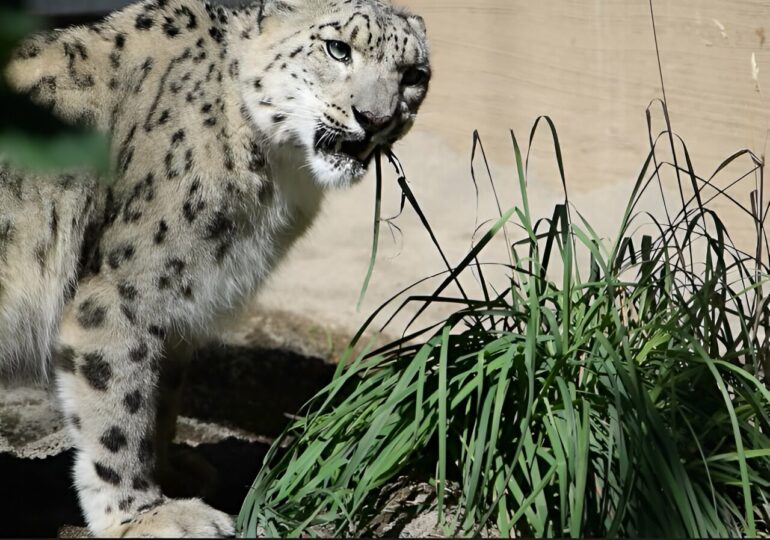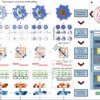Cats may not know Scarborough Fair, but felids such as alpine cats—both in the wild and in captivity—do eat plants despite their classification as carnivores. In particular, Panthera uncia—or snow leopards—seem to have a preference for a specific plant species despite normally being unsuited for a herbivorous diet.
Although some proposed hypotheses include supplemental nutrition or hydration, self-medication for diseases, and digestive aid, the precise reason why these felids consume plants has remained a mystery.
Now, a team of researchers from Kyoto University has identified the DNA of prey animals and plants within the feces of snow leopards. The plant genus Myricaria appeared the most frequently in metabarcoding analysis of 90 fecal samples of wild snow leopards collected in the Kyrgyz Republic. The study is published in Royal Society Open Science.
“Given that felids are essentially carnivores, we were surprised to see a higher frequency of Myricaria in samples with little or no trace of prey animal DNA, suggesting that the plant is consumed by snow leopards when they are hungry,” explains team leader Kodzue Kinoshita of KyotoU’s Graduate School of Asian and African Area Studies in Ecology and Environment.
In addition to snow leopard feces, Kinoshita’s team also collected 36 samples from other mammals in the alpine habitat of Kyrgyzstan’s Sarychat-Ertash Nature Reserve, marking the first study evaluating the relationship between prey animals and plants in felid feces.
In previous studies of 41 extant felid species, researchers found plants in the feces of 24 species. Among these, snow leopard feces contained up to 45% Myricaria. However, the inconclusive results fell short of determining whether Myricaria was more present in snow leopard feces than other plants or whether the Myricaria phenomenon was unique to snow leopards.
The team’s investigation, which applied a molecular-based approach, has provided insight into Myricari’s significant abundance in snow leopard feces and the plant’s noticeable absence in other mammalian feces. In addition, feces containing this plant often did not contain prey animals.
“Through our innovative research, we anticipate providing insight into improved captive environments and more suitable conservation plans for the snow leopard,” concludes Kinoshita.
More information:
Hiroto Yoshimura et al, Metabarcoding analysis provides insight into the link between prey and plant intake in a large alpine cat carnivore, the snow leopard, Royal Society Open Science (2024). DOI: 10.1098/rsos.240132
Citation:
DNA in the feces of snow leopards shows alpine cats eat plants (2024, June 7)



